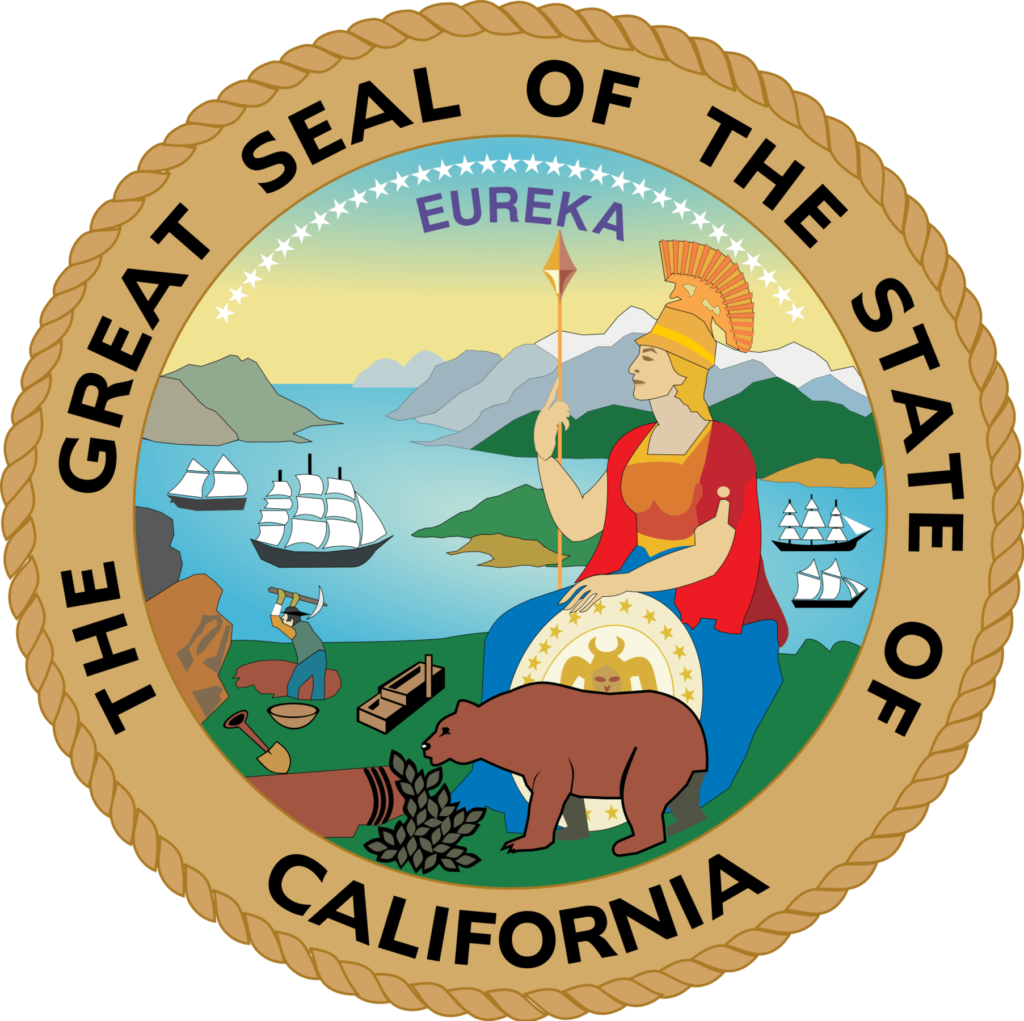California residents with student loans have numerous loan forgiveness alternatives in the state. There may be a California student loan forgiveness program for you, depending on your profession, employer, and desire to serve in specific regions of the state.
In this article, we will discuss the different student loan forgiveness programs available in California, as well as how to apply for them.
Student Loan Forgiveness in California
California is a spectacular location to call home not just because it has numerous attractions, beaches, and Disneyland to visit, but also because the state provides several powerful Federal Student Loan Forgiveness Options to residents buried in education debt.
California’s student loan forgiveness programs are among the finest in the country, providing outstanding perks to those who meet eligibility requirements. Anyone who lives in California and is having difficulty repaying their debts should pay attention since California’s student loan forgiveness programs rank amongst the best in the nation.
To get student loan forgiveness in California, check the following options; pay close attention to their Eligibility Rules and Application Procedures to determine which program will work best for you.
According to state statistics, only 10,000 public-service employees have received loan forgiveness since 2007, even though one million Californians in that sector are qualified. Local authorities want to make sure as many people as possible get the relief they’re entitled to.
Teachers, firefighters, non-profit staff, government employees, and anybody who works in the public sector are eligible for loan forgiveness after 10 years of employment under the Federal Public Service Loan Forgiveness program. Despite its potential to provide tens of thousands of dollars in relief to individuals paying off debts, it is a poorly known initiative.
Does California tax student loan forgiveness?
California allows an exclusion from gross income for student loan debt that is canceled or repaid under the income-based repayment programs administered by the U.S. Department of Education.
Student Loan Forgiveness in General Under federal and state law, gross income generally includes the amount of any discharge of indebtedness of the taxpayer.
Under an exception to this general rule, gross income does not include any amount from the forgiveness (in whole or in part) of certain student loans, provided that the forgiveness is contingent on the student’s working for a certain period of time in certain professions for any of a broad class of employers.
Public Service Loan Forgiveness (PSLF) in California
The federal government created Public Service Loan Forgiveness (PSLF) to encourage more individuals to join the nonprofit and government sectors.
People who work in public service, including teachers and police officers, may get a portion of their student loans canceled tax-free under this program.
What Is Public Service Loan Forgiveness?
Public Service Loan Forgiveness (PSLF) is a federal loan forgiveness program established as part of the College Cost Reduction and Access Act of 2007.
Eligible borrowers who work full-time for nonprofit organizations or the federal, state, local, and/or tribal governments may be eligible for loan forgiveness under PSLF. After making 120 qualifying monthly payments, they may receive loan forgiveness.
The remaining amount of your federal direct student loans will be forgiven after you meet the payment requirement.
What Student Loans Are Eligible for Public Service Loan Forgiveness?
Not all federal student loan borrowers are eligible for PSLF. Only loans you received through the Direct Loan Program qualify.
- Direct subsidized loans
- Direct unsubsidized loans
- Direct PLUS loans
- Direct consolidation loans
Federal Family Education Loan (FFEL) Program loans and Perkins Loans are eligible for PSLF now using the PSLF Waiver.
5 Steps to Qualify for Public Service Loan Forgiveness in California
The process for obtaining PSLF is complicated and confusing, which is why many borrowers are rejected. Only around 5% of applicants have been accepted as of April 2021. To avoid any problems and ensure that you fulfill all of the requirements for PSLF, follow these steps:
Student loan advisors in California can help you to understand these steps and assist you in the application process.
1. Work for a Qualifying Employer
To be eligible for PSLF, you must work full-time for an eligible non-profit or government agency for the equivalent of 120 monthly payments. You are considered a full-time employee if you work 30 hours per week or otherwise meet your employer’s definition of full-time status, whichever is greater for the purposes of PSLF.
You do not have to work for the same employer for the entire ten years, and your employment terms do not have to be identical.
If, for example, you worked for a for-profit business during a certain period, you will not lose eligibility for PSLF credit because of it.
3. Apply for an Income-driven Repayment Plan
You can apply for an IDR plan. There are four different IDR plans:
- Pay As You Earn (PAYE)
- Revised Pay As You Earn (REPAYE)
- Income-based repayment (IBR)
- Income-contingent repayment (ICR)
4. Certify Your Employment Annually
It’s not required, but it’s a good idea to get your employment certification renewed or updated every year or whenever you change jobs.
A portion of the application must be completed and signed by an authorized representative of your employer. An authorized official should be someone who has access to your employment records and is empowered to attest to the status of current or former workers.
Examples of authorized officials include human resource employees or managers.
Mail the form to:
U.S. Department of Education
FedLoan Servicing
P.O. Box 69184
Harrisburg, PA 17106-9184
You may also fax the form to (717) 720-1628.
5. Track Your Payments
The loan servicer will transfer your loans to the PSLF loan servicer MOHELA after you submit the Employment Certification form. MOHELA Servicing will review your form and determine how many qualifying payments you’ve made to date.
The servicer will send you a letter letting you know how many payments you’ve made.
The number of qualifying payments will not be updated until you submit a new Employer Certification Form. However, you may monitor your payments by establishing an internet account with your loan servicer and looking at your loan details as well as your payment history.
6. Submit Your Application for PSLF
You may apply for Public Service Loan Forgiveness after working for an eligible employer for ten years and making 120 monthly qualifying payments.
If your application is accepted, you’ll be notified once the remaining balance has been canceled. Any overpayments would be reimbursed to you if this was the case.
Talk to a Student Loan Advisor
It might be difficult to pay back student loans if you don’t have the necessary funds. On a state and federal level, researching loan discharge programs and forgiveness possibilities can provide some comfort.
Call now to talk with a student loan counselor if you need assistance paying off your debt.
They can help you understand your options and make a personalized plan for repayment.
9 Other Student Loan Forgiveness Programs in California

Here’s a list of student loan forgiveness programs in California that are accessible to residents of the Golden State:
1. Allied Healthcare Loan Repayment Program
Forgiveness amount: Up to $16,000
County Medical Services Program (CMSP) Allied Healthcare Loan Repayment Program (AHLRP) offers up to $16,000 in student loan forgiveness for California-licensed allied health care professions. Qualifying professions include medical assistants, anesthesia technicians, audiologists and more.
To be eligible, health providers must provide a minimum of 32 hours of direct patient care each week at a CMSP-facility in a participating county for 12 months.
2. Bachelor of Science Nursing Loan Repayment Program
Forgiveness amount: Up to $10,000
Bachelor of Science in Nursing Loan Repayment Program (BSNLRP) participants can earn up to $10,000 in loan forgiveness after a 12-month service agreement. It’s available to California-licensed registered nurses with a Bachelor of Science in Nursing (BSN) degree.
Participants must work at least 32 hours per week in direct patient care at an eligible state site.
3. California Dental Association (CDA) Student Loan Repayment Grant
Forgiveness amount: Up to $250,000
The CDA Student Loan Repayment Grant is available to graduates who’ve recently completed dental school or a dental specialty program and are eligible to practice dentistry in California.
The 2022 grant offers an annual $50,000 award over five years for a maximum award limit of $250,000.
Eligible loans include federal and private student loans. Grant recipients must agree to provide dental services within California’s underserved communities.
4. CalHealthCares Loan Repayment Program
Forgiveness amount: Up to $300,000
CalHealthCares Loan Repayment Program offers a significant student loan forgiveness opportunity for California-licensed dentists and doctors. Program participants must have graduated within the last five years or will soon complete a residency or fellowship.
Additionally, borrowers must agree to a five-year service term and meet Medi-Cal patient caseload requirements to be eligible for loan forgiveness.
5. California State Loan Repayment Program (SLRP)
Forgiveness amount: Up to $110,000
The California SLRP is available to a variety of health care providers who are licensed and able to practice in California. Borrowers must not already be participating in another agency’s service obligation or have breached a service agreement in the past.
Additionally, participants must not have any federal debt judgments and be current on child support obligations.
After two years of full-time commitment, recipients can receive $50,000 in California student loan forgiveness. Recipients can extend their service commitment up to four additional years at varying award amounts for a maximum program amount of $110,000.
Those who participate in the program half-time are required to complete a four-year initial obligation for a $50,000 award. Recipients can also extend their contract for up to four additional years to earn differing award amounts.
6. County Medical Services Program (CMSP) Loan Repayment Program
Forgiveness amount: Up to $50,000
Participants of the CMSP Loan Repayment Program must commit to working within an approved facility in one of 35 CMSP-participating counties. Eligible professions include general dentists, primary care nurse practitioners and physician assistants, as well as certain other medical providers.
There are two award tiers depending on whether you serve on a half- or full-time basis. Full-time providers who complete a two-year service commitment can receive up to $50,000.
Half-time providers can receive up to $25,000 in forgiveness after fulfilling a two-year service agreement.
7. Licensed Mental Health (LMH) Services Provider Education Program
Forgiveness amount: Up to $30,000
The LMH Services Provider Education Program is accessible to California-licensed mental health providers. In exchange for up to $30,000 in student loan forgiveness, recipients must agree to provide two years of direct mental health care and at least 32 hours per week at an eligible facility.
8. Licensed Vocational Nurse Loan Repayment Program (LVNLRP)
Forgiveness amount: Up to $6,000
The LVNLRP is specifically designed for practicing licensed vocational nurses (LVNs) in California. In exchange for a 12-month service commitment, offering at least 32 hours of direct patient care at an approved site, participants receive up to $6,000 in loan forgiveness.
9. Steven M. Thompson Physician Corps Loan Repayment Program (STLRP)
Forgiveness amount: Up to $105,000
STLRP is designed to incentivize qualified and California-licensed physicians and surgeons to serve in shortage areas. After fulfilling a three-year, full-time service contract working in underserved communities at an eligible facility, participants can receive up to $105,000 in forgiveness.
Generally, physicians must be practicing outpatient care and provide at least 32 hours of direct patient care per week. Obstetricians must offer at least 21 hours of direct patient care each week.





